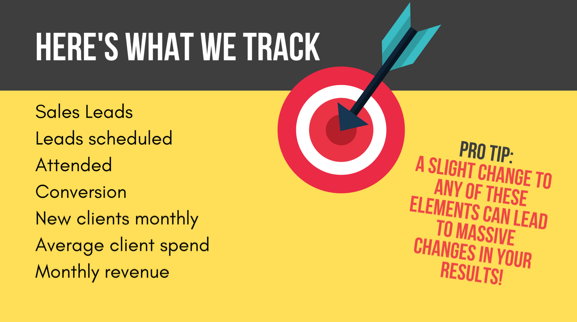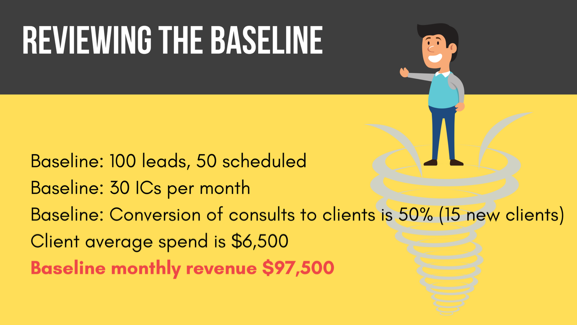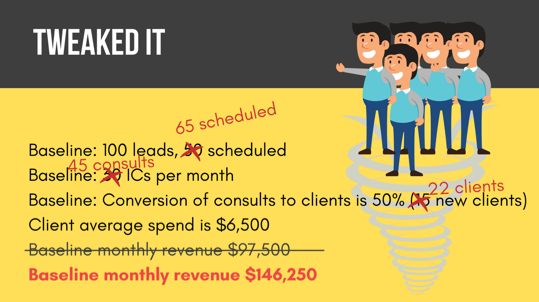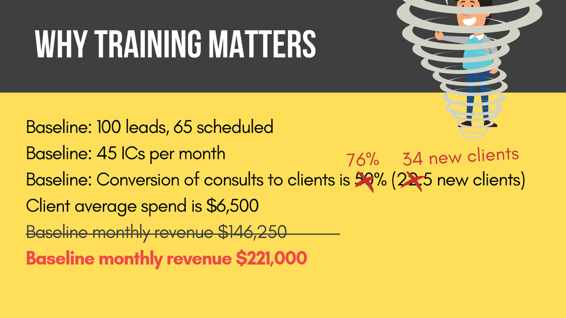Breaking Down Sales KPIs in Law Firms
What should your conversion rate be?
Sales are hard. It’s not something I was ever taught. I didn’t sell knives or vacuum cleaners in college. I never sold cars or college degrees over the phone. I did wait tables in college and was pretty good at customer service. But customer service and sales are not the same, even though they are related. Sales is the ability to close a deal, not just make friends. Most of us network to make friends and inform people about our business and offerings. That is great, and you should keep doing it. But do you know how to close a deal? Do you know you got the best price and one that is fair to you and your client?
I love this quote by Plato:
Conversion is not about implanting new eyes; for they already exist, but giving them a right direction, which they have not.
Now, Plato may be talking about converting to Christianity and it’s interesting to think about the use of the term both as a sales term and a term that marks a huge life change like converting to a religion.
I learned sales by struggling with a horrible conversion rate (that I didn’t know about) and then seeking information and skills to improve that conversion rate. I read about sales and psychological hacks regarding how people make decisions. I simply thought about my role differently and conversion soared. I practiced techniques and created aids that would increase my conversion rate. I became very comfortable and very effective and converting the leads I wanted into clients. However, there came a point in time when I no longer wanted to do consultations. I wanted my team, or some of my team to be able to recreate the results I was getting in terms of numbers.
I looked to bring in someone to teach us sales, real sales techniques. I didn’t really find anything or anyone who would come in and provide a consultative sales strategy workshop for my firm. I reached out to other lawyers I knew to see if we could put one together, no one was really interested. Finally, exacerbated by our low conversion numbers I just put on a workshop internally. There were seven of us. I explained my theories and how I wanted the consultations handled. They had heard this before, but management and teaching are not a one- or two-time game, management and training requires continuous learning and reinforcement. The real magic did not come from my pontification on how I wanted them to handle consultations but from role playing and practicing the techniques. If any of you have ever attended mediation training, you will know what I mean. First learn the theory, then practice the execution. People learn by doing, and while role playing we frequently stopped mid role play to offer candid feedback and check in with both the “attorney” and “client” on how things felt.
The workshop went very well. At the end of our three hours we had set aside, people were not ready to be done and wanted to continue. I felt like it had gone well and we were making a lot of progress and learning new skills. But would the numbers show we could improve our conversion rate? Here is what happened in Modern Law and the tweaks we made that lead to the numbers:
Step one is to determine your baseline data. If at all possible determine your baseline from the last twelve months of data.

- Leads are the number of potential clients that contact your firm in any way. They may find you through AVVO, your website, email you or call you. If they are looking for advice or information in your jurisdiction about your area of law, they are a lead.
- Leads scheduled are the number of appointments that are scheduled for an attorney to meet with a potential client. People cancel for all sorts of reasons. They may not be ready, they may have a conflict, they may have gone with another firm or decided to handle the matter on their own.
- The ratio of scheduled to attended is very important and this key performance indicator is pretty straight forward. If the potential client shows up, they attended.
- We measure conversion as the number of clients that hire divided by the number of consultations that occur during a month. We are not looking to the outcome of each individual appointment because sometimes people come back in the following month to hire. The conversion rate could theoretically be over 100%, that’s ok. Over time, everything will balance out enough for you to measure your conversion rate.
- You also want to track the average number of new clients per month. This will help you predict your revenue and whether or not you need to hire another attorney or paralegal.
- The average client spend is a critical number to track, this is how we can predict revenue and figure out the economic impact of the change in all of the KPIs.
- Monthly revenue can be actual monthly revenue and also projected future monthly revenue.
Your sales and conversion KPIs are leading indicators. That means they predict future growth. Your actual monthly revenue is a trailing indicator, meaning it is a reflection of things that have happened previously (the clients who contacted you, hired you, and paid you for legal work you performed.)
With that background, take a look at the indicators in action. For illustration purposes, this was a baseline when we began the exercise.

The first thing we started working on changing was getting more of those 100 monthly leads in the door. First, we transitioned our two full time intake staff to other positions in the firm. They were well trained and good at their job, but they were burning out. They were isolated and the position had always experienced burn out within 12 – 18 months. I was sick of constantly replacing my intake staff and starting over with training every year.
We established a partnership with a Toronto based company that was dedicated to learning and executing our intake strategy. We trained our dedicated team extensively. They work within our system and know our people. They are an extension of my firm without being on my direct payroll. I don’t have to hire, fire, replace or cover vacations. It is truly the best intake system I could imagine, and this is what they were able to accomplish in terms of numbers.

Take a look at the bottom line, not only was I saving money by not employing two full time intake people, my monthly revenue had increased by ~ $50,000 and I wasn’t spending any more money on marketing. The number of leads that they were scheduling jumped and the number of consultations occurring the in firm had risen to 45 per month! Those are paid consultations. With our conversion rate holding strong at 50% we brought on 22 new clients vs the 15 per month that was our baseline over the last year. At 22 new clients per month, we would need to hire another attorney and could predict anticipated revenue of $146,250.

The following month I made another change. I stopped taking initial consultations to focus on the firms I was working with through Modern Law Practice. The intake numbers held strong at 100 leads, 65 scheduled and 45 attended consultations, but our internal conversion of consultations to hires dropped to 40%. Instead of bringing on 22 clients, we brought on 18. Our projected revenue from those clients was $117,000. Remember how I was going to hire another attorney? At 18 clients per month I wouldn’t need a full-time attorney. Our decreased conversion had real impacts to our bottom line and planning. That’s when we did the workshop. What happened afterwards is the most excited part of this story.

Conversion skyrocketed to 76% and the firm brought on 34 new clients. The impact to our bottom line was real and tangible at $221,000. I needed two new attorneys to handle the load. The three-hour investment in sales training was some of the best time I’ve ever spent. The attorneys learned new and valuable skills and are better listeners and more confident in our approach. The clients feel secure and confident in our abilities to represent them. That means a better relationship and easier representation throughout the case.
Remember, sales is the ability to close a deal, to provide your services to people who need you. You do a disservice to anyone who contacts your firm, needs your help, can afford it and doesn’t hire you. You can’t help them. You spent money and time acquiring a lead that is gone. Sales can and should be learned. Check out the resources, our workshops, and the video for more information.


